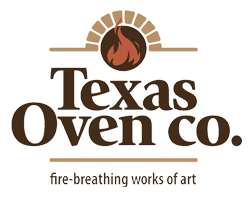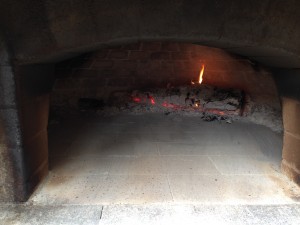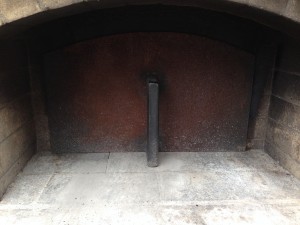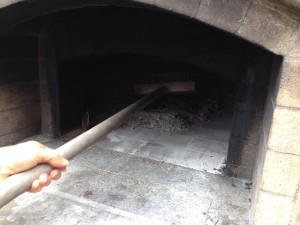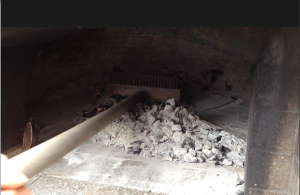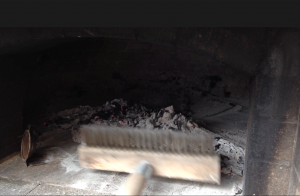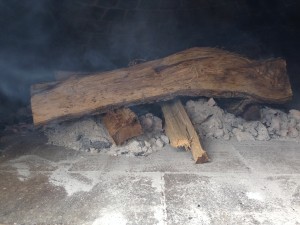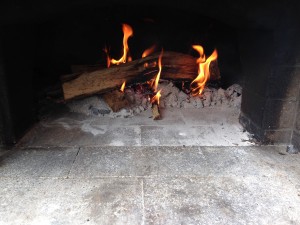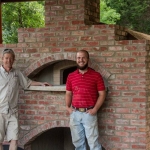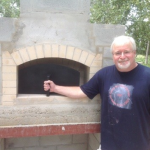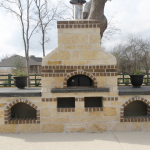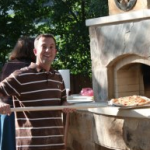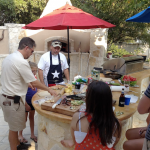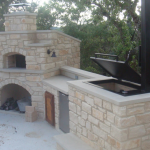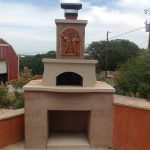Banking a Fire
Banking a fire in your wood-fired oven gives you lots of cooking options and maximizes fuel efficiency. Most homeowners fire up the oven late in the afternoon or early evening and keep a rolling fire going for a couple of hours. This gives plenty of high-heat cooking for foods like pizza, veggies and steak. It also fully saturates the oven’s thermal mass. Later in the evening, banking the fire provides many options for the next morning.
Banking a fire the night before means that when you remove the door in the morning, you can either remove the embers or revive them. Remove the embers for baking. Using an old pizza peel or an ash shovel, remove the coals to a metal trashcan with a tight fitting lid. Even if the coals look completely dead, secure the lid firmly so that no oxygen gets to the coals to revive them. Put the door back on the oven for about 20 minutes to equalize the heat throughout the oven. Then you’re ready to slide in your shaped loaves or bread pans.
After banking a fire you also have the option to revive the coals. This saves time and fuel when you fire the oven on back-to-back days or even within a couple of days depending on your oven’s ability to hold heat. If the interior warmth of your oven is sufficient, introducing oxygen (by opening the door) and adding a little quick-catching wood, coals that appear to be lifeless will begin a quiet clicking sound, as if some little person were snapping his or her fingers. Once the quiet sounds begin, the coals will respond to more fuel.
Nothing compares to breakfast prepared in the wood-fired oven. Banking a fire makes it easy to prepare sausage, bacon, breakfast breads and eggs, either using the stored heat from the night before or reviving the coals. Chef Sean at Flat Creek Estate Winery has created a wood-fired brunch menu featuring eggs with herb butter and roasted tomatoes.
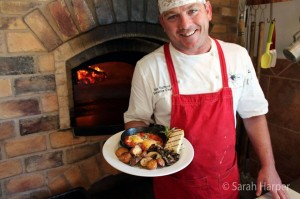
Banking a fire is a time-tested technique for saving firewood and saving time. In order for fires to burn, they require air, fuel and heat. You control how hot, how fast, how slowly, how efficiently your fire burns by managing these three elements: air, fuel and heat. When air circulates freely between the logs, a fire burns hot and fast. When airflow is restricted, fire burns more slowly. Banking a fire restricts airflow by smothering flames with burned embers and ash to tightly “save” the heat under an ashy blanket, until it’s needed again. Pulling aside the embers and ash, separating the remaining partially burned wood, increases airflow to the saved heat. Air invigorates the heat, and with the addition of fast-burning fuel like small pine kindling, flames will ignite.
Experiment with banking a fire in your wood-fired oven. The oven is a super-efficient, protected environment. Learn to manage the three essentials of a good fire: fuel, air and heat. You’ll find that a well-banked fire saves you fuel and time, allowing you to use your oven for a multitude of cooking functions.
Banking a Fire in a Wood-burning Pizza Oven
Use your oven brush to push the fire to the back or the side of the oven. Use an old pizza peel and the oven brush to surround the fire with ash and small bits of coal. These will act as insulation.
Put the door on your oven to cut off the fire’s access to oxygen. Do not close the door on a rolling fire with lots of fresh fuel. Wait until the fire has died down.
Depending on your oven’s ability to hold heat, the coals will stay hot for a day or two. When you remove the door oxygen begins to flow into the oven and you may see some coals glowing orange. Use an oven brush to pull the ash and coals forward.
If you want to use the oven’s stored heat to bake without a live fire, remove the coals and ash to a metal trashcan with a tight fitting lid. When baking bread, remove the coals and the put the door back on for 15-30 minutes to equalize the temperature.
If you want to revive the coals, pull them toward the front and spread them out a bit to increase oxygen flow.
Add kindling or a few very small pieces of well seasoned wood.
The coals will revive and catch the new wood.
